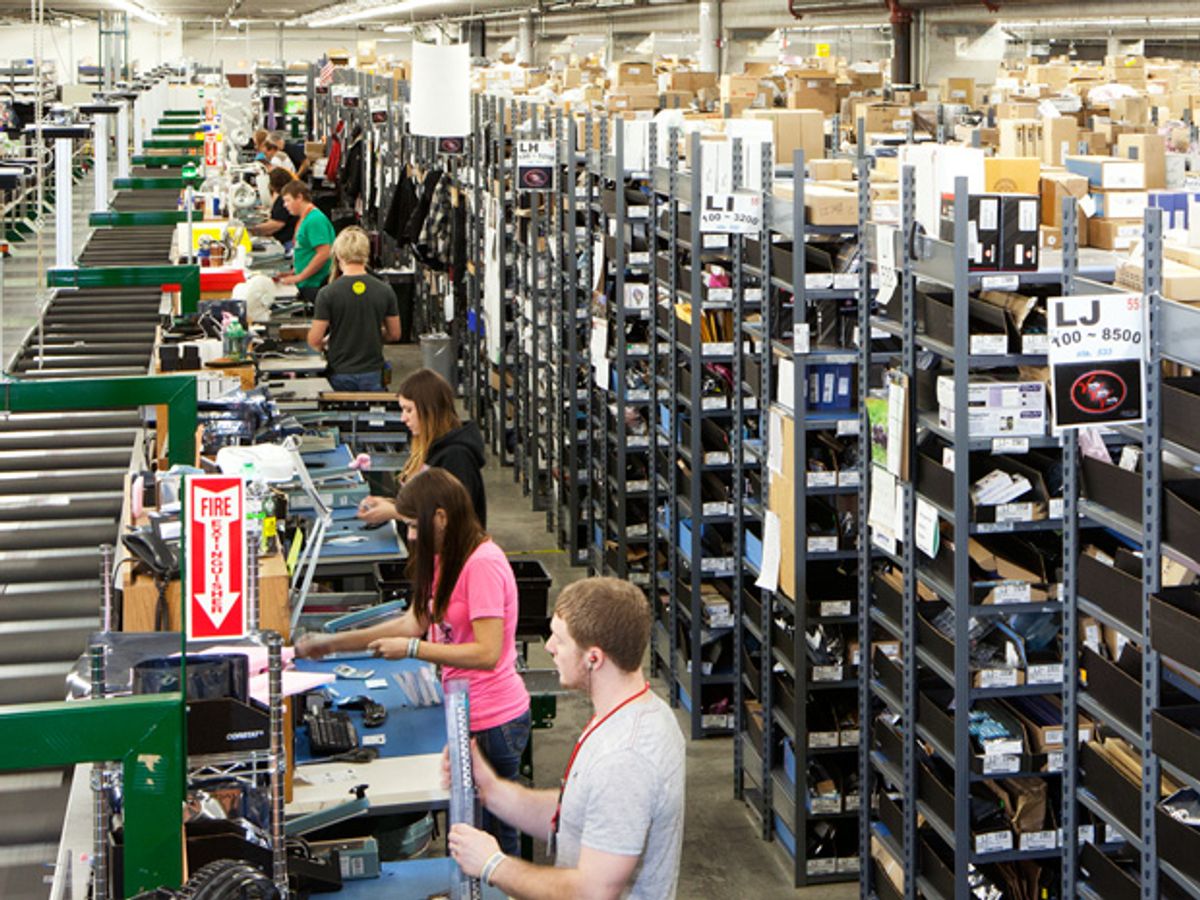















In the 42 years since its founding, Digi-Key Corp. has grown—and grown—into one of the world’s largest electronic-component distributors. Its online catalog features nearly a million parts and products. Last year it sold US $1.6 billion worth of merchandise to more than half a million customers in 170 countries. And the vast majority of Digi-Key’s offerings are kept in stock, available for immediate shipping, in a single place: the company’s 74 000-square-meter warehouse.
That enormous warehouse sits on the southwestern edge of the tiny town of Thief River Falls, Minnesota (population 8661). The nearest city is Grand Forks, N.D., hardly a metropolis. The warehouse operates around the clock, 365 days a year, with the result that any order placed by 8 p.m. local time gets shipped out the same day.
Digi-Key, like its archrival Mouser Electronics, caters to both corporate clients and hobbyists. The company will gladly sell you a Xilinx Virtex-7 field-programmable gate array for $39 452.40, but it will also sell you a single 10-cent through-hole resistor.
And then there’s the customer service. When you call Digi-Key’s toll-free number, an actual person answers, usually within 5 seconds. From there, you’ll be guided expertly, even if you have no idea what you need, even if all you’re getting is that 10-cent resistor, even if you speak Chinese, Hindi, or Portuguese. In an age of impersonal e-commerce, of voice mail that never gets returned, of languishing on hold, the experience of being a Digi-Key customer can seem almost surreal.
About the Photographer
Gregg Segal, an award-winning photographer based in the Los Angeles area, specializes in what he calls the environmental portrait: photographs taken “in a place that tells something about the person.” Segal’s other work for IEEE Spectrum includes portraits of SpaceX engineer Brandon Pearce and of computer-savvy bonobo apes.
Jean Kumagai is the Executive Editor at IEEE Spectrum. She holds a bachelor's degree in science, technology, and society from Stanford University and a master's in journalism from Columbia University.



